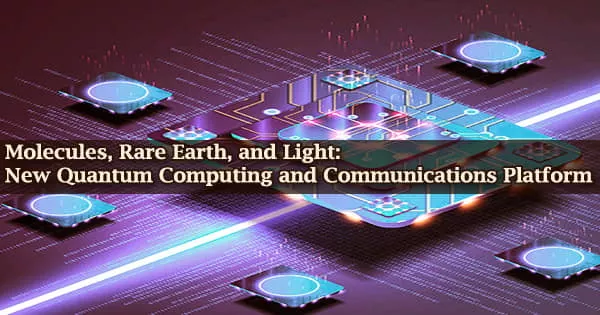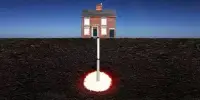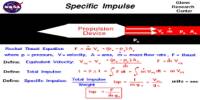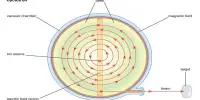Future quantum computers will need to be able to communicate across great distances, which is made possible by the capacity to interact with light. Finding a substance that can completely utilize the quantum characteristics of light, however, is quite challenging.
It didn’t take long for quantum computers to show that they could perform better than classical machines in critical areas, at least theoretically. The above-mentioned system that protects our online traffic from being intercepted could be broken by a quantum computer, which would pose a serious danger to global cyber security.
The potential of a novel material based on rare earth as a photonic quantum system has been demonstrated by a research team from the CNRS and I’Université de Strasbourg, with assistance from Chimie ParisTech-PSL and in conjunction with German teams from KIT.
The findings, which were reported in Nature on March 9, 2022, demonstrate the potential of europium molecular crystals as quantum memory and computing devices. Although quantum technologies suggest a revolution in the future, they are presently difficult to implement.
For instance, it is still uncommon to find quantum systems that can interact with light to produce processing capabilities for information and communication, particularly through fiber optics. Such a platform3 should preferably have a memory as well as a light-based interface and data storage devices.
Within these spin4-based entities, information processing must also be possible. It has been particularly challenging to create materials that permit a connection between spins and light at the quantum level.
Quantum physics is utilized in quantum communication to safeguard data. These rules enable particles, usually photons of light for data transmission through optical cables, to assume a superposition state, which means they can concurrently represent several combinations of 1 and 0.
Europium molecular crystals5 have been successfully used to demonstrate the value of quantum communications and processors by a team of researchers from the CNRS and l’Université de Strasbourg, with assistance from Chimie ParisTech-PSL and in collaboration with German teams from KIT. This was made possible by the crystals’ ultra-narrow optical transitions, which allow for the best interactions with light.
These crystals are the result of the fusion of two quantum technology systems: molecular systems and rare-earth ions (like europium). Despite having good optical and spin characteristics, rare-earth crystals are difficult to integrate into photonic systems.
A reliable connection between spins and light is typically not present in molecular systems due to the absence of spins (a storage or computing unit) or the presence of optical lines that are too broad. Due to their extremely tiny linewidths, europium molecular crystals represent a significant advancement.
This translates into persistent quantum states, which were utilized to show how these molecular crystals could store a light pulse. In addition, the foundation for a quantum computer that can be operated by light has been established.
It opens the door to new designs for quantum memories and computers in which light will play a key role. This new material for quantum technology has hitherto unexplored features. The results also open up a wide range of research possibilities because of how many different chemical compounds can be produced.
Notes:
- The Institut de recherche en chimie de Paris (CNRS/Chimie ParisTech-PSL), the Institut de physique et chimie des matériaux de Strasbourg (CNRS/Université de Strasbourg), the Institut de science et d’ingénierie supramoléculaire (CNRS/Université de Strasbourg), and the Centre européen de sciences quantiques were among the research centers represented.
- The Institute of Quantum Materials and Technology (IQMT), the Institute of Nanotechnology (INT), and the Physikalishes Institut (PHI) of the German-based Karlsruher Institute of Technology (KIT) also took part.
- A platform refers to a multifunctional quantum material.
- Along with mass and electric charge, a particle’s spin influences how that particle will behave in a magnetic field.
- Molecular crystals are perfectly ordered stacks of individual molecules.
















